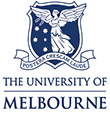HLA-B Alleles With Shared Peptide Binding Specificities Define Global Risk of Co-trimoxazole-Induced Severe Cutaneous Adverse Drug Reactions
Authors:
- Li, Yueran
- Gibson, Andrew
- Saeed, Hajirah N.
- Ashraf, Mohammadali
- Li, Danmeng
- Ostrov, David A.
- Krantz, Matthew S.
- Mallal, Simon A.
- Alves, Eric
- Chopra, Abha
- Choo, Linda
- Dodiuk-Gad, Roni P.
- Kaffenberger, Benjamin
- Drucker, Aaron M.
- Goh, Michelle S.
- Ergen, Elizabeth
- Micheletti, Robert
- Rosenbach, Misha
- Martin-Pozo, Michelle D.
- Gangula, Rama
- Williams, Elizabeth A.
- Yu, Alexis
- O’Connor, April
- Mahan, Kelby
- Kwan, James T.
- Metcalfe, Derek
- Rashad, Ramy
- Shanbhag, Swapna S.
- Tahboub, Mohammed Ali
- Pedretti, Sarah
- Choshi, Phuti
- Chimbetete, Tafadzwa
- Selim, Rose
- James, Ian
- Trubiano, Jason A.
- Lehloenya, Rannakoe
- Peter, Jonny G.
- Phillips, Elizabeth J.
Details:
The Journal of Allergy and Clinical Immunology: In Practice, 2025-08-08
Article Link: Click here
Background Co-trimoxazole is a leading global cause of severe cutaneous adverse drug reactions (SCAR) including Stevens-Johnson syndrome/toxic epidermal necrolysis (SJS/TEN) and drug reaction with eosinophilia and systemic symptoms (DRESS). Co-trimoxazole-induced SCAR are associated with HLA class I alleles including HLA-B∗13:01 and HLA-B∗38:02 in Southeast Asian (SEA) populations. However, the global generalizability of these associations is unknown but critical for population-appropriate risk stratification and diagnosis. Objective To determine HLA risk factors associated with co-trimoxazole-induced SJS/TEN and DRESS in populations from the United States and South Africa. Methods We performed high-resolution HLA typing on dermatologist-adjudicated co-trimoxazole-induced patients with SCAR in the United States (n = 63) and South Africa (n = 26) compared with population controls. Peptide binding and docking analyses were performed using MHCcluster2.0 and CB-Dock2. Results In a multiple logistic regression model, HLA-B∗44:03 (corrected P [Pc] < .001; odds ratio [OR] = 4.08), HLA-B∗38:01 (Pc < .001; OR = 5.66), and HLA-C∗04:01 (Pc = .003; OR = 2.50) were independently associated with co-trimoxazole-induced SJS/TEN in the United States. HLA-B∗44:03 was also associated with co-trimoxazole-induced DRESS in South Africa (Pc = .019; OR = 10.69). Distinct HLA-B variants with shared peptide binding specificities (SPBS) and HLA-C∗04:01 identified 94% and 78% of co-trimoxazole-induced SJS/TEN and DRESS in the United States, respectively. The SEA risk allele HLA-B∗13:01, with SPBS to HLA-B∗44:03, was identified in just one of 63 US patients with SCAR. Conclusions HLA alleles with SPBS to SEA-related risk alleles, including HLA-B∗44:03 (SPBS with HLA-B∗13:01) and HLA-B∗38:01 (SPBS with HLA-B∗38:02) but also HLA-C∗04:01, predisposed to co-trimoxazole-induced SCAR in the United States and South Africa. These findings provide biological plausibility and strategies for global risk prediction and diagnosis of co-trimoxazole-induced SCAR.


